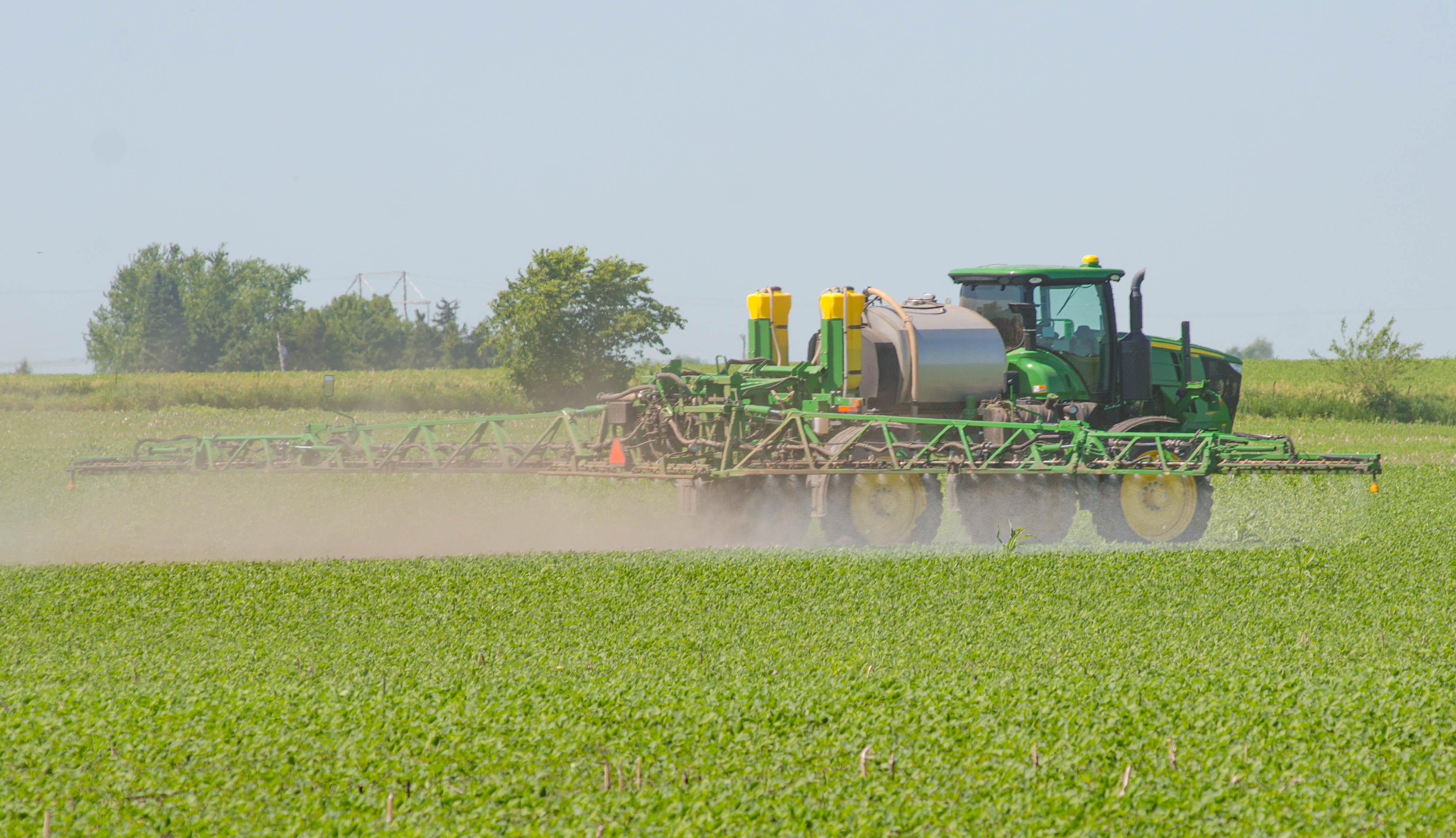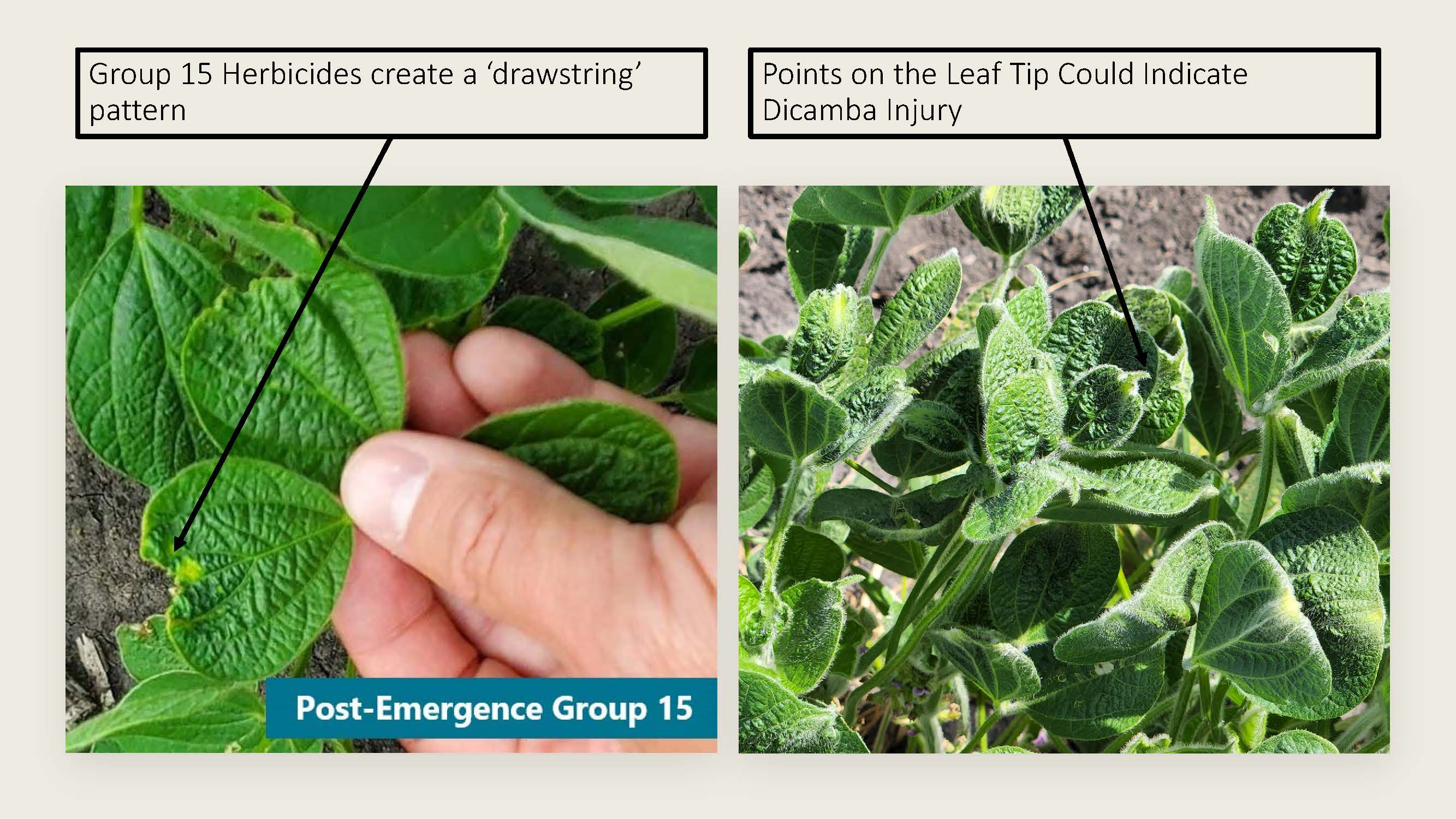
If you are suspecting injury to soybeans from dicamba drift, the Iowa Soybean Association (ISA) encourages you to file an incident report or documentary report with the Iowa Department of Ag Land Stewardship Pesticide Bureau at 515-281-8591. (Photo: Joclyn Bushman/Iowa Soybean Association).
Recognizing and reporting dicamba damage
August 4, 2022 | Kriss Nelson
If you are suspecting injury to soybeans from dicamba drift, the Iowa Soybean Association (ISA) encourages you to file an incident report or documentary report with the Iowa Department of Ag Land Stewardship Pesticide Bureau at 515-281-8591.
Injury can also be reported by calling the Bayer hotline at 1-844-RRXTEND immediately following potential signs of dicamba damage.
“Dicamba injury causes the greatest yield reductions when it occurs later in the season,” says Scott Nelson, ISA senior field services program manager. “Flowering soybeans are much more susceptible compared to vegetative soybeans.”

It could be due to dicamba drift if you are witnessing leaf cupping in your soybeans. However, Nelson says not all leaf cupping can be blamed on dicamba drift.
“Group 15 herbicides applied postemergence, along with some adjuvants and weather can create cupping in soybeans,” he says. “It is very difficult to tell whether soybean leaf cupping is due to environmental stresses or dicamba.”
To help make that ruling, Nelson suggests closely examining the leaf tips. Dicamba injury will produce a pronounced leaf tip, while many other stresses in soybeans will create a “heart shape” at the leaf tip.
Nelson says not all dicamba drift injury is from dicamba-applied Xtend soybean production.
“In some areas across the state, farmers applied dicamba products to their corn to manage herbicide-resistant weeds,” says Nelson. “In some cases, these applications were applied as rescue treatments later than normal for dicamba applications to corn.”
Back